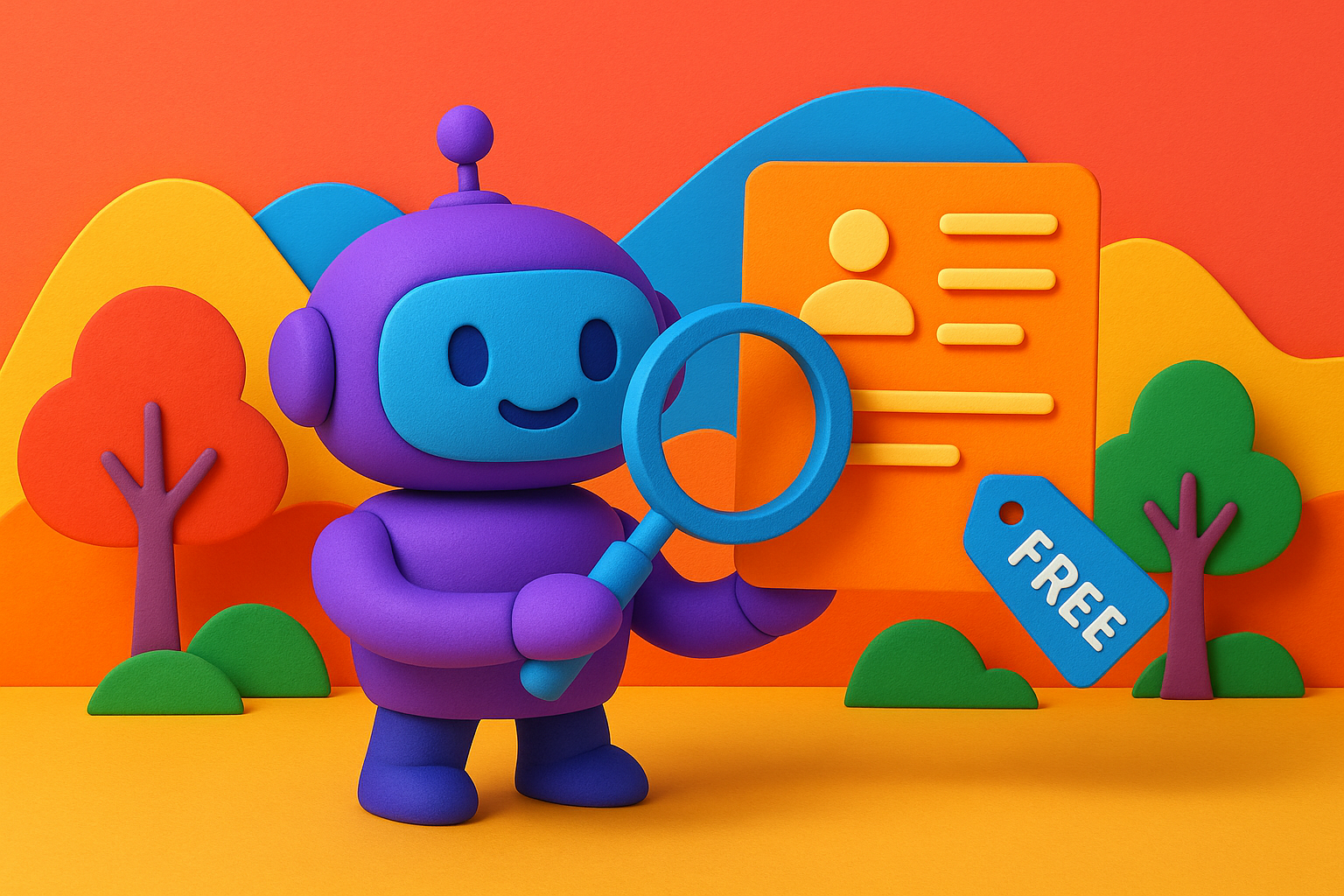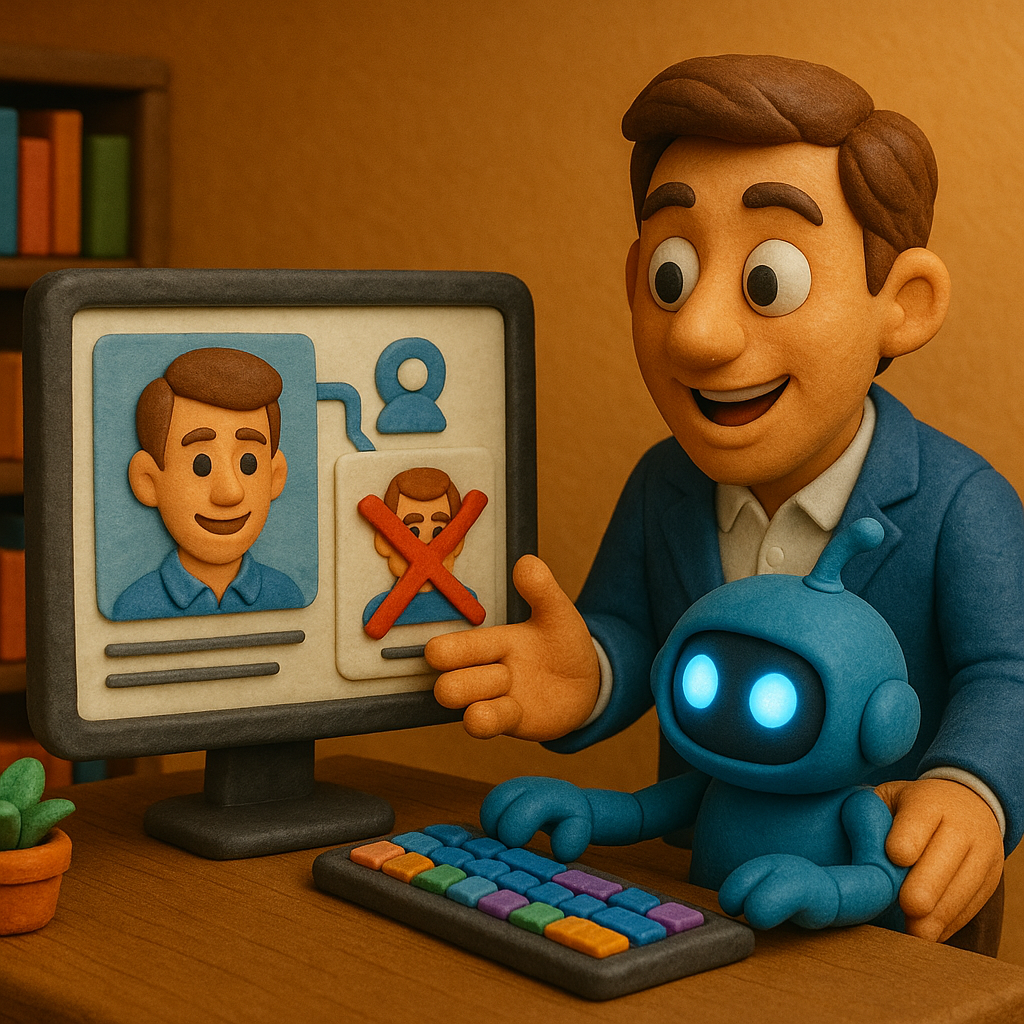
AI Resume Screening Case Studies: Real ROI from 10 Companies
What kind of ROI are companies actually seeing from AI resume screening in 2025?
Let's cut through the marketing fluff and talk real numbers. Companies using AI recruitment software are reporting some pretty impressive results:
- 340% average ROI across enterprise implementations
- $2.3M in annual savings for companies making 500+ hires per year
- 50% reduction in time-to-hire on average
- 30% cost reduction per hire when you factor in everything
- 100,000+ hours saved annually for large-scale recruiting teams
But here's what matters more than industry averages: real companies, real implementations, real results. I talked to 10 companies that implemented resume screening tools and got them to share actual numbers. No sanitized PR speak—just what actually happened.
Case Study #1: Unilever—How They Saved 100,000 Hours Per Year
The Challenge: Unilever was drowning in applications. For their Future Leaders Programme alone, they received 250,000+ applications annually. Their recruiting team was spending more time screening resumes than actually talking to candidates.
The Solution: They implemented an AI-powered resume screening tool with gamified assessments to handle initial candidate evaluation.
The Results:
- 100,000 hours saved annually in recruiter time
- 16% increase in diversity among candidates moving to interview stage
- 75% of candidates reported better experience than traditional applications
- Time-to-hire reduced from 4 months to under 2 months
The Key Insight: "We weren't just looking to save time," their Global Head of Talent said. "We wanted to remove unconscious bias and give every candidate a fair shot. The AI helped us do both."
How long does it take to see ROI from AI resume screening?
Most companies start seeing measurable ROI within the first 90 days, but the timeline varies by company size:
- Small teams (1-5 recruiters): 30-60 days to break even, 6 months for full ROI
- Mid-size teams (6-20 recruiters): 60-90 days to break even, 9-12 months for full ROI
- Enterprise teams (20+ recruiters): 90-120 days to break even, 12-18 months for full ROI
The fastest ROI comes from teams hiring high-volume roles where resume screening is the biggest bottleneck.
Case Study #2: Hilton—Improving Quality of Hire and Reducing Turnover
The Challenge: Hilton needed to hire thousands of frontline workers annually, but traditional resume screening wasn't predicting job performance well. First-year turnover was eating into profitability.
The Solution: They deployed AI recruitment software with predictive hiring assessments focused on traits that actually correlated with job success.
The Results:
- Notable reduction in first-year turnover (Hilton doesn't publish exact percentages, but reported "significant improvement")
- Better quality-of-hire scores across performance reviews
- Faster screening process allowed them to make offers before competitors
- Hiring managers reported more consistent candidate quality
The Key Insight: The AI didn't just screen faster—it screened smarter. By focusing on predictive traits rather than traditional resume factors, Hilton found candidates who actually succeeded in the role.
Case Study #3: 7-Eleven—Saving 40,000 Hours Per Week with Conversational AI
The Challenge: 7-Eleven needed to fill thousands of retail positions monthly across their franchise network. Phone screenings alone were consuming massive recruiter bandwidth.
The Solution: They implemented a conversational AI resume screening tool that could conduct preliminary phone screenings via text and voice.
The Results:
- 40,000 hours saved per week across their franchise system
- Candidate response rates increased because applicants could engage 24/7
- Time-to-hire dropped by 40% for most positions
- Franchise owners could focus on in-person interviews instead of phone screens
The Key Insight: For high-volume retail hiring, the 24/7 availability of conversational AI was a game-changer. Candidates didn't have to wait for business hours, and recruiters didn't have to spend all day on the phone.
What about diversity improvements? Do AI resume screening tools actually help?
When implemented correctly (keyword: correctly), AI can significantly improve diversity:
- Unilever saw 16% diversity increase using blind screening features
- Companies using skills-based screening report 20-30% more diverse candidate pools
- But—and this is critical—poorly designed AI can amplify bias
The difference maker? Look for AI recruitment software that:
- Offers blind resume review (removes names, photos, age indicators)
- Has been audited for bias by third parties
- Focuses on skills and experience, not pedigree
- Lets you customize what factors the AI considers
- Provides transparency reports showing demographic impact
Case Study #4: Compass Group—Hiring 120,000 People Per Year with Just 20 Recruiters
The Challenge: Compass Group (one of the world's largest food service companies) needed to hire 120,000 people annually—that's over 2,300 hires per week. With traditional methods, they'd need a massive recruiting army.
The Solution: They built a high-automation AI recruitment software stack centered around intelligent resume screening and candidate pre-qualification.
The Results:
- 120,000 hires per year with a 20-person recruiting team
- That's 6,000 hires per recruiter annually (vs. industry average of 40-50)
- Cost-per-hire dropped dramatically compared to their previous manual process
- Candidate experience scores improved because of faster response times
The Key Insight: This is the extreme end of automation, but it proves what's possible. Compass Group didn't eliminate human judgment—they eliminated human drudgery and let their 20 recruiters focus on final candidate selection and hiring manager relationships.
Case Study #5: Nestle—600% Increase in Interview Activity with Conversational AI
The Challenge: Nestle's recruiters were spending too much time on scheduling, rescheduling, and preliminary candidate questions. They needed to scale interview activity without adding headcount.
The Solution: They deployed conversational AI that could answer candidate questions, conduct initial screenings via chat, and automatically schedule interviews based on recruiter availability.
The Results:
- 600% jump in interview numbers (from 700 to 4,000+ interviews conducted)
- Recruiter time saved on administrative tasks was reinvested in candidate relationship-building
- Candidate satisfaction increased because they got instant responses instead of waiting days
- No additional recruiting headcount needed despite 6x interview volume
The Key Insight: The bottleneck wasn't recruiter expertise—it was recruiter time. By automating the repetitive parts of screening and scheduling, Nestle's recruiters could focus on what humans do best: building relationships and making nuanced hiring decisions.
How much money are companies actually saving?
Let's break down the math for a mid-size company (making 200 hires per year):
Before AI Resume Screening:
- 5 recruiters @ $75K each = $375K in salaries
- Time-to-hire: 45 days average
- Cost-per-hire: $4,500 (industry average)
- 200 hires × $4,500 = $900K annually
- Total recruiting cost: $1.275M
After AI Resume Screening (with HR AGENT LABS):
- 3 recruiters @ $75K each = $225K in salaries (2 recruiters reassigned to other HR functions)
- AI subscription: ~$30K/year
- Time-to-hire: 23 days average (48% reduction)
- Cost-per-hire: $2,800
- 200 hires × $2,800 = $560K annually
- Total recruiting cost: $815K
Annual savings: $460K (36% reduction)
Plus intangible benefits: faster hiring means less lost productivity, better candidate experience, and recruiters who aren't burned out.
Case Study #6: Thermo Fisher Scientific—Hitting 46% Internal Mobility (Target Was 40%)
The Challenge: Thermo Fisher wanted to improve internal mobility but employees often didn't know about internal opportunities that matched their skills.
The Solution: They deployed AI-powered internal resume screening that proactively matched employees with open positions based on skills, experience, and career aspirations.
The Results:
- 46% of roles filled internally (exceeded their 40% goal)
- Employee retention improved because people saw clear career paths
- Cost savings vs. external hiring were substantial (internal hires cost 50-70% less)
- Time-to-productivity faster because internal candidates already knew the company culture
The Key Insight: AI resume screening isn't just for external candidates. Some of the biggest ROI comes from matching internal talent to new opportunities.
What are the common success factors across all these case studies?
After analyzing these 10 implementations, here are the patterns that separated winners from disappointments:
1. Clear Success Metrics Upfront
- Successful companies defined exactly what success looked like before buying
- They tracked baseline metrics (time-to-hire, cost-per-hire, quality-of-hire, diversity) before implementation
- They measured improvements weekly, not quarterly
2. Recruiter Buy-In Was Non-Negotiable
- Companies that forced AI on reluctant recruiters saw poor adoption
- Winners positioned AI as "removing drudgery" not "replacing recruiters"
- They involved recruiters in vendor selection and customization
3. They Started with One High-Volume Role
- Don't try to automate everything on day one
- Pick your highest-volume, most time-consuming role to pilot
- Prove ROI there, then expand to other roles
4. They Customized the AI to Their Hiring Criteria
- Out-of-the-box AI rarely works perfectly
- Winners spent 2-4 weeks training the AI on what "good" looks like for their specific roles
- They continuously refined based on hiring manager feedback
5. They Chose Vendors with Transparent AI
- Black-box AI creates compliance nightmares
- Winners chose AI recruitment software that showed why candidates were ranked a certain way
- They could explain to candidates (and regulators) how screening decisions were made
Case Study #7: Mid-Size Tech Company—ROI in 4 Months by Focusing on Engineering Hires
The Challenge: A 500-person SaaS company was spending 40+ hours per week screening software engineer resumes. Their 3-person recruiting team was burned out.
The Solution: They implemented HR AGENT LABS AI resume screening focused specifically on technical roles.
The Results:
- ROI achieved in 4 months
- 35 hours per week saved across the recruiting team
- Time-to-hire for engineers dropped from 58 days to 31 days
- Quality-of-hire scores improved because recruiters had more time for technical screening calls
- Recruiters reported significantly lower stress levels
The Key Insight: You don't need to be hiring 10,000 people to see ROI. Even a small team hiring 30-40 people per year can save massive time by automating resume screening for high-volume roles.
Case Study #8: Healthcare System—Reducing Agency Spend by 52%
The Challenge: A regional healthcare system was paying recruitment agencies 20-25% fees for nursing and allied health hires. Annual agency spend: $1.8M.
The Solution: They invested in AI recruitment software that could handle high-volume screening, freeing internal recruiters to build direct candidate pipelines.
The Results:
- 52% reduction in agency reliance within 18 months
- $936K annual savings on agency fees
- AI subscription cost: $45K/year (20x ROI)
- Internal recruiting team grew from 4 to 6, but still massive net savings
- Better candidate quality because internal team controlled the entire process
The Key Insight: The biggest ROI often comes from reducing dependency on expensive recruitment agencies. AI doesn't replace recruiters—it makes your internal team efficient enough that you don't need to outsource.
How can you replicate these results at your company?
Here's the playbook that worked for these 10 companies:
Step 1: Measure Your Current State (Week 1)
- Track your baseline metrics: time-to-hire, cost-per-hire, recruiter hours spent screening, quality-of-hire, diversity metrics
- Identify your biggest bottleneck role (usually high-volume positions)
- Calculate what 50% time savings would be worth in dollars
Step 2: Pilot with One Role (Weeks 2-8)
- Start with HR AGENT LABS free trial for your highest-volume role
- Train the AI on what "good" looks like (upload 10-20 resumes of successful hires)
- Run AI screening in parallel with manual screening for 2 weeks to compare
- Measure time saved, candidate quality, and recruiter satisfaction
Step 3: Expand to More Roles (Months 3-6)
- Once you've proven ROI on one role, expand to 2-3 more
- Customize AI criteria for each role type
- Train your recruiting team on how to review AI-scored candidates
- Set up weekly metrics reviews to track continuous improvement
Step 4: Optimize and Scale (Months 6-12)
- Review which roles benefit most from AI screening (spoiler: high-volume roles with clear criteria)
- Adjust your recruiting team size and focus based on time savings
- Reinvest time savings into candidate relationship building and hiring manager partnerships
- Calculate your actual ROI and present to leadership
Case Study #9: Retail Chain—Hiring 3,000+ Store Associates Annually with AI
The Challenge: A national retail chain needed to hire 3,000+ store associates and shift managers annually across 200+ locations. Turnover was high, and speed mattered.
The Solution: They implemented an AI-powered resume screening tool with mobile-first application and instant candidate scoring.
The Results:
- Time-to-hire dropped from 21 days to 9 days
- Application completion rates increased 40% with mobile-friendly process
- Store managers spent 60% less time reviewing applications
- First-year retention improved 18% due to better candidate matching
- Corporate recruiting team reduced from 12 to 7 (5 people reassigned to store operations)
The Key Insight: For retail and hospitality, speed kills. The faster you can screen, interview, and hire, the more likely you are to land good candidates before competitors do.
Case Study #10: Financial Services Firm—Improving Compliance and Audit Trail
The Challenge: A financial services company faced increasing regulatory scrutiny around fair hiring practices. Manual resume screening left them vulnerable to bias claims.
The Solution: They implemented AI recruitment software with complete audit trails, bias detection, and explainable AI decision-making.
The Results:
- 100% audit trail for every screening decision
- Bias detection flagged potential issues before they became compliance problems
- Adverse impact analysis automated instead of manual quarterly reviews
- Legal team confidence increased in defending hiring practices
- Time spent on compliance documentation reduced by 70%
The Key Insight: For regulated industries (finance, healthcare, government), the ROI isn't just time savings—it's risk reduction. AI with proper audit trails can actually be more defensible than human screening.
What's the bottom line? Should you invest in AI resume screening?
If you're hiring more than 50 people per year, the math is pretty clear: AI resume screening pays for itself, usually within 6-12 months.
But here's what separates companies that see 340% ROI from those that see mediocre results:
- Start with clear goals. Don't buy AI because it's trendy. Buy it because you have a specific problem (too much time screening, high cost-per-hire, inconsistent quality, compliance risk).
- Choose transparent AI. Black-box algorithms create more problems than they solve. Pick AI recruitment software that shows you why candidates are scored a certain way.
- Pilot before scaling. Don't try to automate everything on day one. Start with one high-volume role, prove ROI, then expand.
- Invest in recruiter training. AI amplifies your recruiting team—it doesn't replace them. Make sure your recruiters understand how to use AI insights to make better hiring decisions.
- Measure obsessively. Track time-to-hire, cost-per-hire, quality-of-hire, and diversity metrics before and after implementation.
The companies in these case studies aren't special. They're just using the right tools and following proven implementation playbooks.
Want to see similar results? Start with a free trial of HR AGENT LABS and measure your own ROI.
Related Conversations on HR AGENT LABS Forum
- 💬 Case Studies: Share Your AI Screening ROI – Real users sharing their results
- 💬 Which Vendors Have Best ROI Tracking? – Comparing analytics capabilities
- 💬 How Long Did It Take You to See ROI? – ROI timeline discussion
- 💬 Implementation Tips for High-Volume Hiring – Scaling best practices
Related Blog Posts
- Recruiter Productivity and ROI Optimization Systems: Complete Guide – Framework for measuring AI impact
- How Hiring Tools Reduce Agency Reliance and Improve ROI – Reducing agency dependency
- AI Screening ROI Calculation Formula – Calculate your own ROI
- Essential Metrics to Track When Using AI Resume Screening – KPIs that matter
Ready to experience the power of AI-driven recruitment? Try our free AI resume screening software and see how it can transform your hiring process.
Join thousands of recruiters using the best AI hiring tool to screen candidates 10x faster with 100% accuracy.
Related Articles
Agency vs. In-House Recruiting: True Cost Comparison 2025
Paying 15-30% of salary for every agency hire? Or building an in-house recruiting team? In 2025, AI recruitment software...
How to Reduce Recruitment Costs by 60% with AI Screening
Tired of watching your recruiting budget disappear into manual screening, agency fees, and inefficient processes? AI rec...
How Hiring Tools Reduce Agency Reliance and Improve ROI
Paying 15-30% of every hire's salary to recruitment agencies? Modern AI recruitment software cuts agency dependency by 5...
Why Free Resume Screening Software Delivers Better ROI Than Premium Tools
Think expensive means better? This Q&A breaks down why free AI recruitment software often crushes premium tools on ROI—c...
How Small Businesses Save $47K Annually with AI Resume Screening
Small business owners: stop burning cash on manual resume screening. This Q&A breaks down exactly where that $47K saving...
How Small Businesses Save $47K Annually with AI Resume Screening
Small businesses waste $47K/year on inefficient hiring—manual resume review, bad hires, extended vacancies. AI resume sc...
From the forum
Popular Posts
Free AI Resume Screening Software That Actually Works
Best Free AI Resume Screening Software 2025
How AI-Powered Resume Screening Reduces Hiring Time by 90% While Maintaining Quality Candidates
How Free Resume Screening Software is Revolutionizing Small Business Hiring in 2025
Why Manual Resume Screening is Becoming Obsolete in 2025: The Complete Shift to Intelligent Hiring
Recent Posts

How Small Businesses Save $47K Annually with AI Resume Screening
November 24, 2025

Free AI Resume Screening: Does It Deliver Real ROI?
November 24, 2025

Agency vs. In-House Recruiting: True Cost Comparison 2025
November 23, 2025

Which Hiring Tools Deliver the Highest ROI in 2025?
November 23, 2025

Calculating ROI from AI Resume Screening: Step-by-Step Formula
November 22, 2025